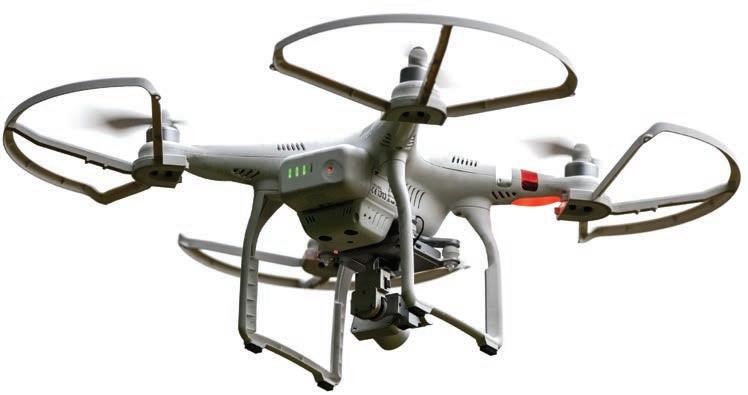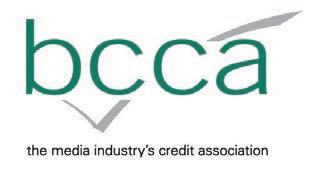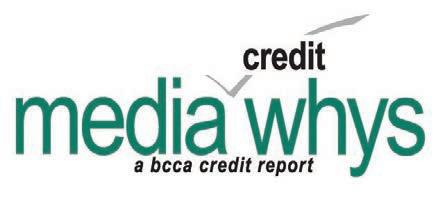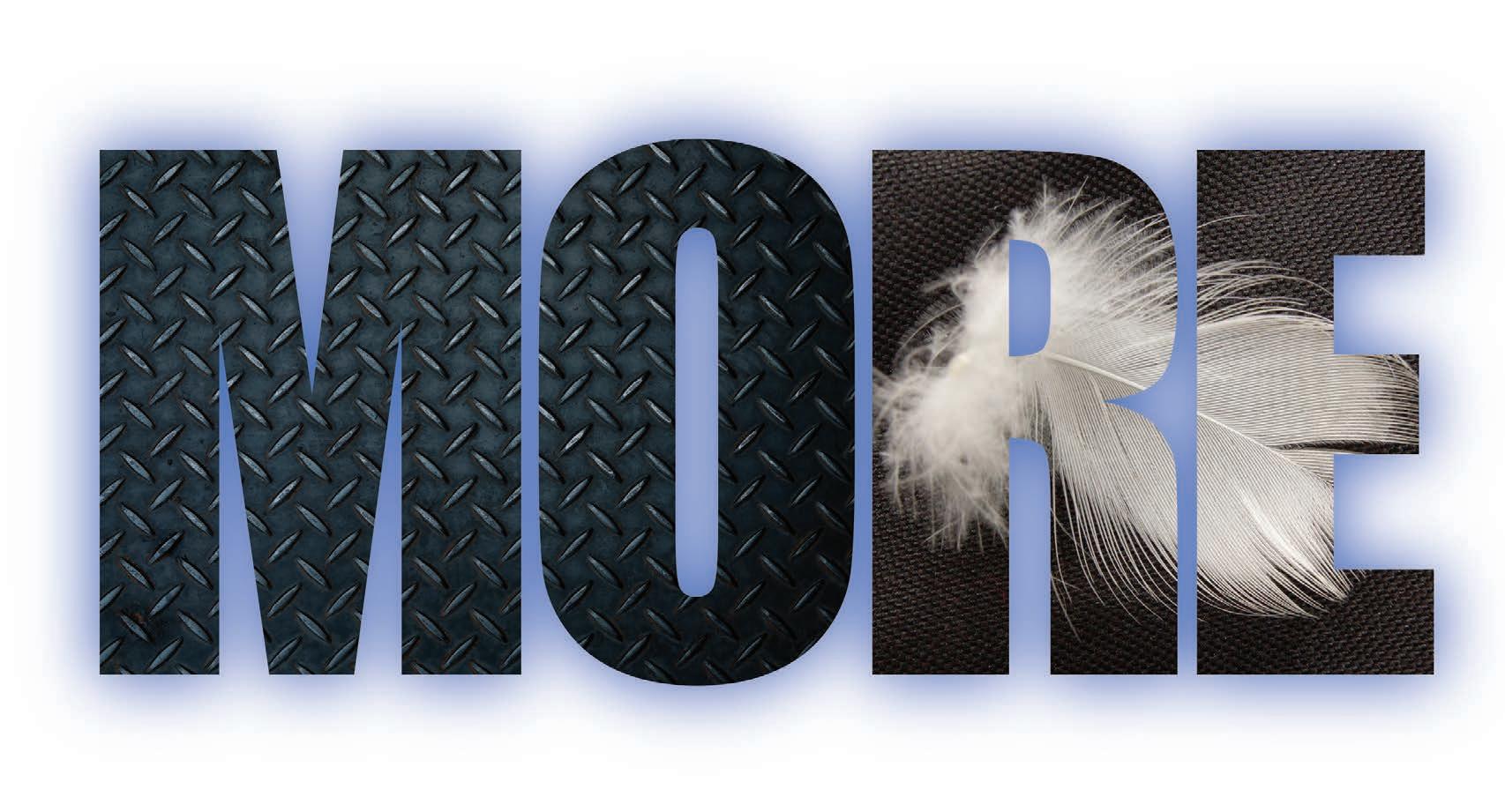
5 minute read
Last Word
Widening Drone Vistas
The FAA may ease up restrictions that ban drones from flying over people. But some say it’s not going far enough. BY ANNE SWANSON
Over the last several years, small unmanned aerial systems (sUAS), also known as drones, have provided compelling coverage of natural disasters such as Hurricane Michael and California wildfires. However, most of the drone imagery has not included individuals due to the Federal Aviation Administration’s (FAA’s) current rule restricting drone operations over people.
While there have been some waivers, the rule has greatly limited coverage of breaking news events, particularly in urban areas. But that may be changing. The FAA has now proposed modifications to this restriction.
Under the new proposal, there are three categories of permissible sUAS operations, which are defined primarily by the level of the injury risk that they pose. Category 1 is simple and straightforward: operators would be able to fly drones weighing 0.55 pounds or less over people without restriction.
Category 2 would allow sUAS above that weight to operate over people if the drone manufacturer can demonstrate that the resulting injury from a crash into people would be below a certain severity threshold (measured as no more than the injury caused by a transfer of 11 foot-pounds of kinetic energy from a rigid- object). In Category 2, the drone cannot have exposed rotating parts that could lacerate human skin.
Category 3 allows for a higher injury threshold: an injury no more severe than from the transfer of 25 foot-pounds of kinetic energy. But it limits individuals’ exposure to possible injuries through three additional operational requirements: a) the drone may not be flown over open-air gatherings of people; b) operations need to take place over restricted-access areas with all individuals in the defined area receiving notice of the drone flights; and c) for operations in unrestricted areas, the sUAS may transit, but not hover, over people.
The FAA received nearly 1,000 comments on its proposals, with roughly a half dozen from media-related parties. All media commentators supported liberalization of the rule, in many cases contending that the FAA’s proposal had not gone far enough. They took issue with the 0.55-pound weight cap for Category 1 as too restrictive.
Many parties contend that the information upon which the FAA based the kinetic energy and injury thresholds is outdated and derived from commercial space studies
that have nothing to do with operations just above the earth’s surface.
Others noted that the proposals were more restrictive than some of the closed-set waivers currently issued to the film and television industry and asserted that the FAA should consider adopting risk-mitigation factors from those waivers.
Regardless, the new proposals are certainly an improvement over current restrictions, which the FAA adopted in mid-2016. Under the current rule, drones may not operate over human beings unless the individuals are directly participating in the drone’s operation or located under a covered structure or inside a stationary vehicle that provides reasonable protection in the event of a crash.
“Directly participating” is defined very narrowly; the term includes only the pilot-in-command, the operator manipulating the sUAS controls (if other than the pilot), a designated visual observer and any other person necessary for safety, such as someone maintaining the operation’s perimeter.
Filming non-participants at an angle is allowed, as long as the sUAS does not fly directly over them. This performance-based approach has allowed some clever, but safety-conscious operators to cover events with people from a distance.
Waivers of the current rule are available, but fewer than 40 have been issued. Only a handful have gone to media operations. Obtaining a waiver involves submitting extensive (and expensive) testing data to demonstrate operational safety. The waivers include lengthy conditions to ensure that the operations meet FAA safety standards. Prior to adoption of the 2016 rule, the FAA had issued case-by-case authorizations for drone operations, including for closedset filming by the movie industry. Those authorizations involved numerous conditions to ensure safety, such as providing safety briefings to all individuals on the set and obtaining their consent to overflights.
In adopting the 2016 rule, the FAA specifically rejected a suggestion that these measures would offer sufficient risk mitigation to allow operations over people outside of closed sets.
The FAA is reviewing comments about its new proposal. However, it has stated that finalization of any decision on operations over people must wait until the the agency first concludes another proceeding dealing with remote identification, or “license plates,” for drones. That proceeding is not expected to conclude for at least a year.
M. Anne Swanson is a partner in the law firm Wilkinson, Barker, Knauer LLP. She can be reached at (202) 383-3342 or ASwanson@wbklaw.com.
MEDIA WHYS HAS MEDIA-SPECIFIC CREDIT INFORMATION FROM ADVERTISERS IN THE TOP 100 DMAS.
WHAT CREDIT REPORTS ARE YOU RELYING ON?
is the ONLY credit report that provides exclusive payment information FROM Media Companies FOR Media Companies. Our reports include complete credit data from twelve media companies, representing 97% of the top 100 DMAs, and our media partners continue to increase!
Analyze how advertisers actually paid other media companies and you’ll have the best information to assess credit worthiness and keep your bad debt low. Plus, our reports include collection filings, tax liens, judgements, corporate linkage, payment trends, and trade data from D&B® or Experian®.


Start making better credit decisions with local, media-specific data from your industry association – BCCA.

Collecting MORE for you requires a blend of strength and delicacy.
There is an art to collecting media receivables. Not everyone can do it or do it well. Some accounts need a firm approach during the collection process. A show of strength. Other accounts react better to gentle persuasion. A softer MORE delicate touch. The trick is not to be so firm or so strong to lose future business opportunities or too soft as you may never collect the debt.

The true art of debt collection lies in knowing when and how much of each technique to use, blending the approach to the account. At Szabo Associates, we’re masters at being hard as steel or soft as a feather. We know what to say and when and how to say it. It’s because we have MORE experience and MORE training than anyone in the industry. Not to mention a proprietary database that has chapter and verse on thousands of media clients and their payment histories. Szabo has been successfully collecting media receivables longer and better than anyone else. Is it any wonder we collect MORE for our clients?
Szabo Associates, Inc. 404-266-2464 www.szabo.com info@szabo.com



